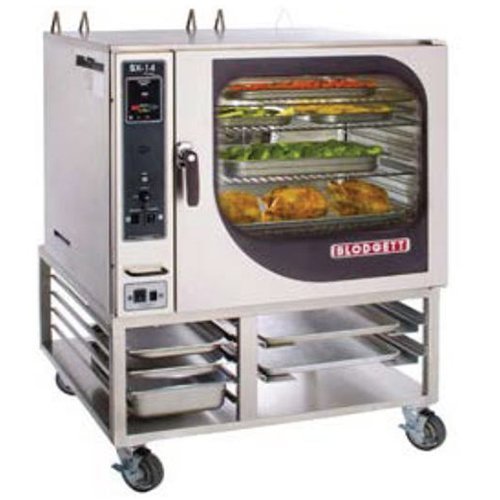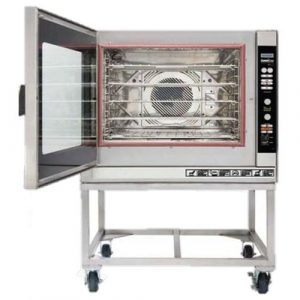5 Questions To Ask Before Buying A New Combi Oven
 Last week we gave you some tips about how to make sure you’re getting the most out of your deep fryer. This week, we’re moving on to another important piece of equipment in the kitchen: the Combi Oven.
Last week we gave you some tips about how to make sure you’re getting the most out of your deep fryer. This week, we’re moving on to another important piece of equipment in the kitchen: the Combi Oven.
A Combi Oven is an oven with three functions: convection, steam and combination cooking. In the convection mode, the oven circulates dry heat – ideal for pastries and breads. The steam mode injects water into the oven to poach fish, rice and vegetables. The true genius behind the combi oven is the combination mode which uses both dry heat and steam to maintain exact humidity levels, thus giving you more control of the moisture levels in food.
Traditionally, combis are better suited to kitchens that offer a wider range of menu items. Catering and banquet operations, buffets, and institutional cafeterias are among the most common operations that invest in combi ovens, as they tend to offer tremendous selections of food that change on a daily basis. These are not, however, the only operations that combis can be found. As they become more common, combis have started making their way into chicken roasting operations, bakeries, and other commercial cooking environments.
But, before you start shopping for a brand new combi oven for your bar or restaurant, there are a few important questions you’ll want to ask yourself.
1) What utilities are available in the kitchen?
Site conditions may determine whether gas or electric is needed, but may also be influenced by chef preference, and utility costs. Operators with hard water should consider a boiler-less combi to eliminate much of the maintenance problems associated with liming and hard water. Hard water can also be filtered to minimize deposits and extend the life of the unit.
2) What kind of volume does your kitchen need to produce?
Helps you determine the size needed. In general, units range from 1 to 12 steam table sized pans. Smaller units are almost always electric. Medium to large size units may be either, but if buying a large capacity electric unit, be sure there is electric service to support the load. A 10 steam table pan-sized unit requires 13 kW to 19 kW to operate.
3) What kind of cooking do you need to do?
Combi ovens are great for many applications including baking, roasting, grilling, braising, blanching, poaching and batch steaming or some a-la-carte steaming. But in the case of production steaming and heavy a-la-carte steaming, your customer may still need a traditional steamer.
4) What special features will you need?
Many units feature programmable cooking cycles. Some include settings for quick defrost, rethermalizing, poaching, gentle steaming & warming. Some also offer a self-cleaning option. Many include a side mounted hose & sprayer for easier cleaning.
5) Do you need a boiler?
Combis are available with and without boiler units. Boilers keep hot water in steady supply so steam is continually available. Units without a boiler create steam by injecting water directly on the heating elements. Most large models come with a boiler because of the volume of steam needed. Smaller units will not require a boiler to maintain proper humidity levels. Mid-sized combi ovens can be found in both configurations.
Interested in buying an awesome new combi oven for your bar or restaurant? Don’t hesitate to call your PJP sales rep! We’ll make sure your equipment addresses all of the above concerns and any new concerns you might have.
NEED HELP WITH THIS?
Get immediate help with this topic from a certified PJP Product Specialist.
Typical response within 24 hours.

